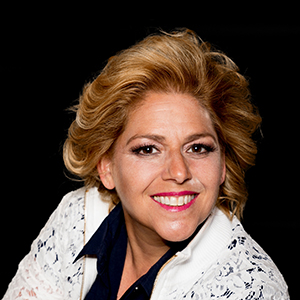In this Article

With a highly versatile skill set, a medical assistant is an important extra set of hands for doctors and healthcare administrators. In this role, you’ll work with patients and communicate with doctors, nurses, insurance representatives, and pharmacists.
Day-to-Day Duties
Medical assisting can be a fast-paced position. This means medical assistants need to solve problems and be everywhere at once while remaining calm and professional. If they do their job well, their office runs smoothly.
Perform Routine Medical and Administrative Tasks
Medical assistants may perform any number of daily tasks, including:
Build Relationships with Patients
Being a good listener is vital for a medical assistant. Whether they see a patient once a year or several times a month, medical assistants offer an understanding ear for patients, who may be in for a routine doctor’s exam or because they’re struggling with a chronic disease.
Good medical assistants know when to talk, when to listen, and how to take into account a patient’s mood or personality when interacting with them. The relationships they build with patients can have a positive influence on both the patient’s outlook and the facility’s reputation.
Update Patient Medical Records
One of your most important tasks as a medical assistant is keeping patient medical records current. You’ll enter a patient’s weight and blood pressure and their pre-exam interview responses into a computer database. You may also be responsible for filing patient medical records and adding written notes from physicians or nurses based on exams and any lab tests.
Prepare Exam Rooms
Preparing exam rooms requires a number of steps, from disposing of contaminated supplies to sterilizing medical tools. Medical assistants might also:
Manage Laboratory Tests and X-rays
Medical assistants frequently arrange laboratory services. Depending on their certification and employer, some medical assistants might collect and perform basic lab tests. Many also coordinate X-rays with the medical imaging team or assist with X-ray preparation and development.
Use Current Technology
Technology plays a major role in a medical assistant’s day-to-day duties. Medical assistants manage electronic health records (EHR), which are used to store a patient’s medical history, treatment plans, test results, and immunization dates.
Medical assistants also use other forms of technology. On the clinical side, they run lab tests and use medical equipment such as EKG technology. On the administrative side, they use scheduling software, applications to check in patients, and video for telehealth patient appointments.
Skills of a Successful Medical Assistant
Danielle Sadighi is the founder of the American Medical Certification Association (AMCA), one of five accrediting groups for medical assistants. She’s been involved in certification for 28 years and says there are seven areas that medical assistants need to master:
While medical assistants must be knowledgeable in all of these areas, there’s been a shift in emphasis on certain skills in recent years, says Sadighi.
“We can see that EKG and phlebotomy have drastically decreased, and professionalism has drastically increased,” she says. “And, if you talk to a medical assistant, they’ll tell you, ‘Years ago, I needed to know how to perform EKGs and how to draw blood.’ Now, everything has gone very individualized—hospitals want medical assistants, they want phlebotomists, they want EKG.”
Aspiring medical assistants can take a certificate course or earn an associate degree. Online courses are available but they will require in-person training.
Where You’ll Work
Typically, most medical assistants will learn how to perform tasks on the clinical side and the administrative side. Some might go into a job that focuses on one more than the other, but most medical assistants will do both.
The type of healthcare setting you work in will determine many of your responsibilities and can be a factor in your salary. The number of employees, patient volume, and type of patients can also play a role.
Physician’s Office
Hospital
Outpatient
Learn how to become a medical assistant in different states: Alabama | California | Florida | Georgia | New Jersey | New York | Ohio | Pennsylvania | South Carolina | Texas
Hot Jobs in Medical Assisting
According to the U.S. Bureau of Labor Statistics, more than half of medical assistants work in physicians’ offices, but you’ll also find them in medical and surgical hospitals, outpatient care centers, and offices of other health practitioners, including specialists.
Clinical Medical Assisting Jobs
Although you’ll still have some administrative duties, working as a medical assistant in a clinic provides more opportunities to work alongside a physician and use medical tools and technology.
- Ophthalmology:
- Ophthalmic medical assistants conduct eye tests, help with the use and care of contact lenses, collect patient medical histories, and assist with minor surgery.
- Podiatry:
- Podiatric medical assistants make casts for feet, develop X-rays, and assist with podiatric surgery. You’ll need to have strong knowledge of foot anatomy and be comfortable working with patients who may be in pain. Medical assistants interested in sports medicine often find podiatry to be a great steppingstone.
- OB-GYN:
- In this role, you’ll help physicians with exams and provide guidance and education to pregnant women. OB-GYN medical assistants should be well-versed in issues such as menopause, HPV, and female anatomy.
- Chiropractic:
- If you’re interested in a natural approach to medicine, working as a chiropractic medical assistant could be a good fit. You’ll help a chiropractor treat patients using a number of methods, including hot and cold therapies.
Administrative Medical Assisting Jobs
Organized, detail-oriented medical assistants thrive in an administrative setting. If you choose to specialize in the non-clinical side of medical assisting, you may spend more time as a medical biller and coder or as an administrative assistant.
As a medical biller and coder, you’ll analyze records, keep track of patient data, determine codes for insurance billing, and work closely with physicians to ensure accuracy.
Administrative medical assistants schedule appointments, fill out insurance forms, and record patient information. They typically work closely with healthcare administrators crafting documents, taking meeting notes, and completing other office tasks.
As you begin your search for a medical assistant school, you’ll find that a strong curriculum will cover both administrative and clinical tasks. Upon graduating, you should be comfortable working in both settings, although you’ll likely need on-the-job training for a specialized medical office.
Advancing Your Career
As more physician practices convert to using electronic health records, medical assistants must master this software. Your responsibilities and professional stature will grow as you learn EHRs and other software and can analyze the data they generate.
Another way to stand out and possibly boost your salary is to earn professional certification, or even stack certifications. Because the healthcare industry is growing, the role of the medical assistant is expected to expand. It could be a good bet to consider earning credentials outside of your field to demonstrate your versatility to employers.

Written and reported by:
Hana LaRock
Contributing writer

With professional insight from:
Danielle Sadighi
Founder, American Medical Certification Association (AMCA)